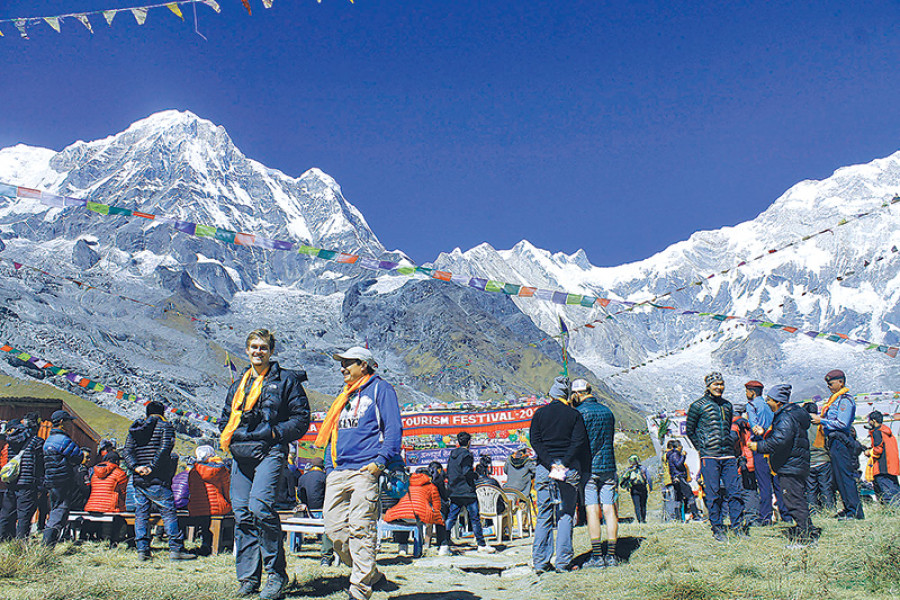Money
Glaciers cause damage to Annapurna Base Camp
Melting glaciers have eroded huge swathes of land in the Annapurna Base Camp over the years, casting a shadow over the prospects of trekking in the world-renowned Annapurna circuit.
Dipak Pariyar
Melting glaciers have eroded huge swathes of land in the Annapurna Base Camp over the years, casting a shadow over the prospects of trekking in the world-renowned Annapurna circuit.
Soil erosion caused by melting glaciers has posed direct threat to four hotels in the region so far.
Yet no study has been conducted to contain destruction caused by glaciers.
“Around 40 years ago, there used to a grass field here and cattle used to graze on the land,” said Jagan Gurung, pointing to the land which has been destroyed by glaciers over the years. Gurung’s father had established the first hotel in the base camp in the 1970s.
If the devastation continues, the future generation will not be able to stand on the base camp and spend time, according to JB Gurung, another hotel operator in the base camp.
Moving glaciers carry land surface with them, creating ridges. This process drastically alters the landscape over the years. This is not good news for Annapurna Base Camp, located at an altitude of 4,130 metres, where tens of thousands of domestic and international tourists flock every year, making it one of the most renowned trekking trails in the world.
Trekking in the Annapurna circuit began in 1966 after Colonel Jimmy Roberts, a British citizen also known as ‘father of trekking’ in Nepal, introduced the map of the trail. Since then millions of tourists from around the world have trekked in the region, from where spectacular landscape and breath-taking views of snow-capped mountains can be seen. Today, the trekking circuit is being seen as the backbone of the tourism sector in Province 4.
But a lot is at stake here because of destruction caused by glaciers.
“The central government should conduct a detailed study on soil erosion caused by melting glaciers,” said Yubaraj Kuwar, chief of Annapurna rural municipality, adding, “This is not something the local body can do on its own.”
In the late 1980s, the base camp came under the jurisdiction of the Annapurna Conservation Area Project (ACAP). But the project too has not conducted any study on devastation caused by glaciers.
“The fate of ACAP itself is under question [in the new federal government setup],” said Anand Subedi, assistant administrator of ACAP Ghandruk, indicating the project will not conduct any study anytime soon. Amidst this backdrop, Annapurna Sanctuary Tourism Committee (ASTC), which is currently holding a festival in the base camp for the first time, has handed over a memorandum to representatives of different authorities demanding a thorough study into the matter at the earliest.
“The melting glaciers are reducing the area of the base camp and initiatives should be taken at the earliest to stop this,” says the memorandum handed over by ASTC President Lalit Gurung to Parliamentary Development Committee Chairman Rabindra Adhikari, lawmaker Sharada Poudel, Chief District Officer Taranath Adhikari, and National Trust for Nature Conservation Member Secretary Govinda Gajurel, among others.




 8.12°C Kathmandu
8.12°C Kathmandu















